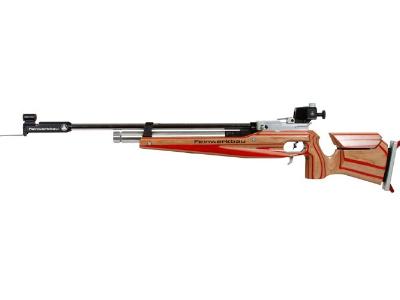
Air Rifle
Versatile air rifle built for target shooting, plinking, or small game – power, accuracy, and fun in every shot.
Understanding the Air Rifle Barrel
The air rifle barrel is a critical component that significantly influences the performance and accuracy of an air rifle. It plays a pivotal role in guiding the pellet from the chamber to its target, making it essential for any enthusiast or competitive shooter to understand its features and maintenance.
Types of Air Rifle Barrels
There are several types of barrels found in air rifles, each with unique characteristics:
- Smoothbore Barrels: These barrels lack rifling and are typically used for shotguns or air rifles designed for shooting multiple projectiles at once.
- Rifled Barrels: Most common in precision shooting, these barrels have grooves that spin the pellet, improving stability and accuracy over longer distances.
- Lothar Walther Barrels: Known for their exceptional quality, these are often used in high-end air rifles due to their precise manufacturing standards.
The Importance of Barrel Length
The length of an air rifle barrel impacts both velocity and accuracy:
- Shorter Barrels: Generally lighter and more maneuverable but can sacrifice some velocity.
- Longer Barrels: Often provide higher velocities due to increased air pressure behind the pellet but can be cumbersome to handle.
Selecting the Right Barrel Material
The material used for manufacturing an air rifle barrel affects durability and weight. Common materials include:
- Copper-Plated Steel: Offers resistance against corrosion while maintaining strength.
- Blued Steel: Provides a classic look with decent protection against rust but requires regular maintenance.
- Synthetic Materials: Lightweight options that can enhance portability without compromising performance.
Caring for Your Air Rifle Barrel
A well-maintained air rifle barrel ensures optimal performance. Here are some tips for care:
- Clean Regularly: Use appropriate cleaning kits designed specifically for air rifles to prevent buildup inside the barrel.
- Avoid Excessive Force: When cleaning, avoid using too much force which may damage the rifling inside your barrel.
- Lubricate Sparingly: Only use recommended lubricants sparingly on moving parts; excess lubricant can attract dirt and debris.
Tuning Your Air Rifle Barrel
Tuning involves adjusting various aspects of your setup to achieve better performance. Considerations include:
- Pallet Weight Matching:Select pellets that complement your specific barrel type for enhanced accuracy.
- Bedding Adjustments: This involves ensuring that your action fits properly within its stock, affecting how vibrations travel through the rifle during firing.
- Muzzle Device Selection: Installing muzzle brakes or suppressors can help manage recoil and noise levels.